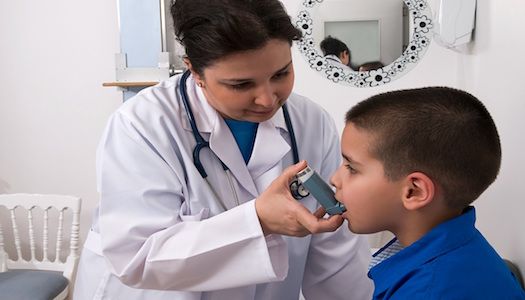Article
Telemedicine's Impact on Allergy and Asthma Through Monitoring and Adherence
Author(s):
Researchers agree the telemedicine is empowering physicians to more efficiently and conveniently handle patients, and is expected to provide increasingly demonstrable positive therapeutic benefits

As telemedicine is increasingly used for an increasing variety of applications in hospitals and private practices, researchers presented their perspective and experience at the forefront of this expanding field in a lecture at the 2018 American Academy of Allergy, Asthma & Immunology (AAAAI) and World Allergy Joint Congress in Orlando, FL.
Matteo Bonini, MD, PhD, a Senior Research Fellow at National Heart and Lung Institute, Imperial College London and Assistant Professor Medicine Dr. Jennifer A Shih, MD, with the Emory University School of Medicine, explained to attendees that while telemedicine has been defined more than 50 different ways, it basically is the intersection of medical information, public health, and business delivered through the internet.
Bonini described a wide range of eHealth domains including, but not limited to, electronically distributing public health services, e-commerce, e-pharmacy, telemonitoring, and consumer health resources.
He pointed out that asthma, by affecting 30 million European children, is the most common chronic disease in children. Approximately 1 child dies daily from asthma attacks that may have been preventable, and more than 50% of patients do not exercise proper adherence in managing their asthma — a clear association with significant morbidity and mortality.
Bonino highlighted an important study published in the Lancet Respiratory Medicine showing how an electronic monitoring audiovisual reminder device could be used to improve adherence in school-aged children. Half of the asthmatic children on regular inhaled corticosteroids (n=220) in the study were assigned to receive an enabled or disabled electronic monitoring device. The percentage adherence was raised from 30% to 84% by use of an enabled device.
Bonini sees compliance issues as of the major needs that should be addressed going forward, working with the European Academy of Allergy and Clinical Immunology.
Shih brought an American perspective as she began asking the basic questions: Who likes convenience, who uses Amazon Prime or Amazon Now — which delivers within 2 hours in Atlanta — and wouldn’t it also be convenient to begin to address medical issues on your time using telemedicine.
Some of the challenges to telemedicine are that it should be secure, and as Bonini noted, compliant with regulations. By 2020 we expect a physician shortage of approximately 90,000. Telemedicine is highly scalable, and so it may help to address this problem. Other benefits include travel and scheduling-associated cost savings, greater access to healthcare, and studies have demonstrated many examples of improved, health outcomes.
However, upcoming challenges in telemedicine including technology, licensing, credentialing, licensing, privacy, and evaluation of various platforms, still persist.
Bonino and Shih agree the telemedicine is empowering physicians to more efficiently and conveniently handle patients, and is expected to provide increasingly demonstrable positive therapeutic benefits — especially in improving allergy and asthma outcomes.
Click here to sign up for more MD Magazine content and updates.
Related Coverage >>>
Is Indoor Home Intervention for Asthma Effective?





